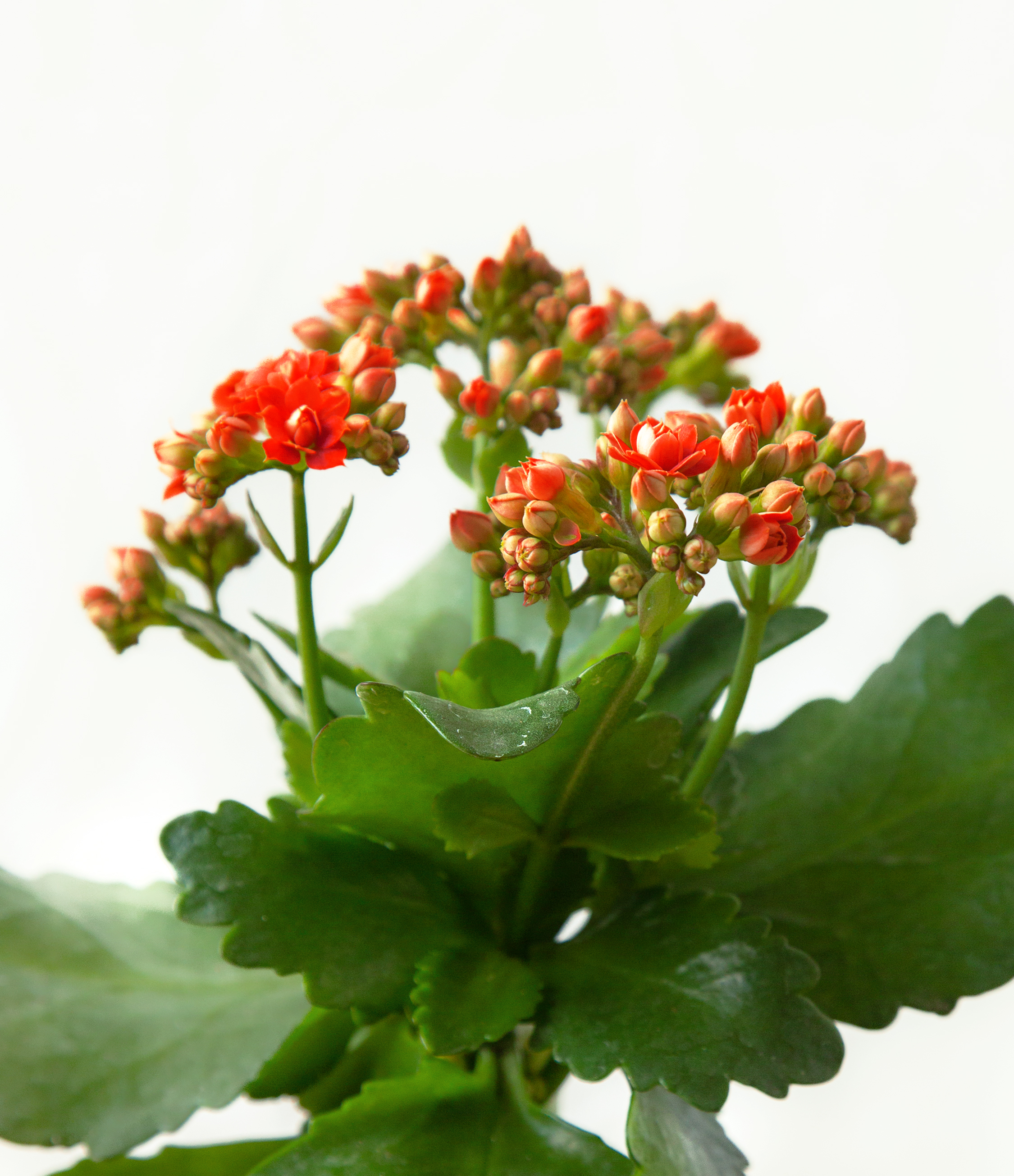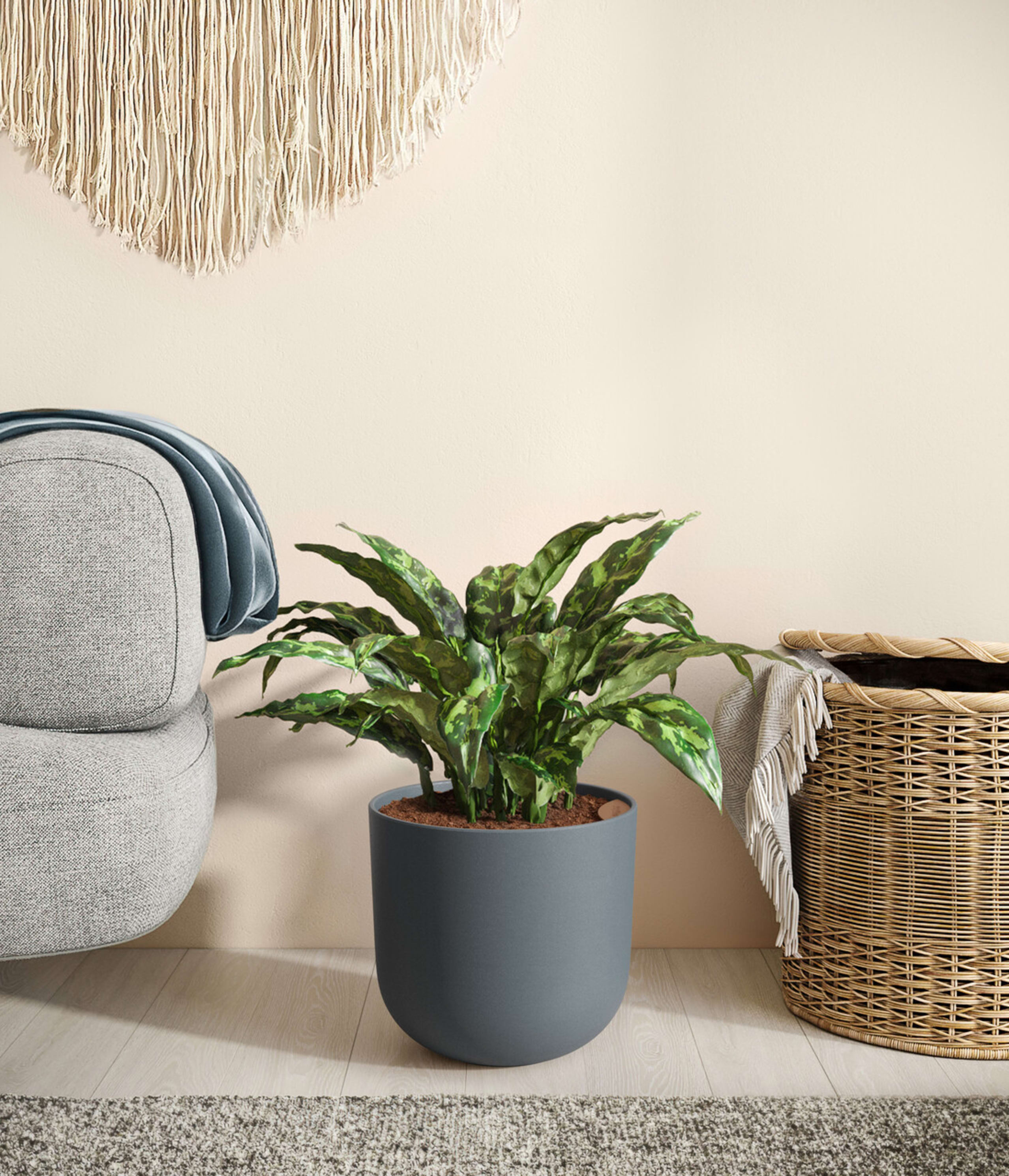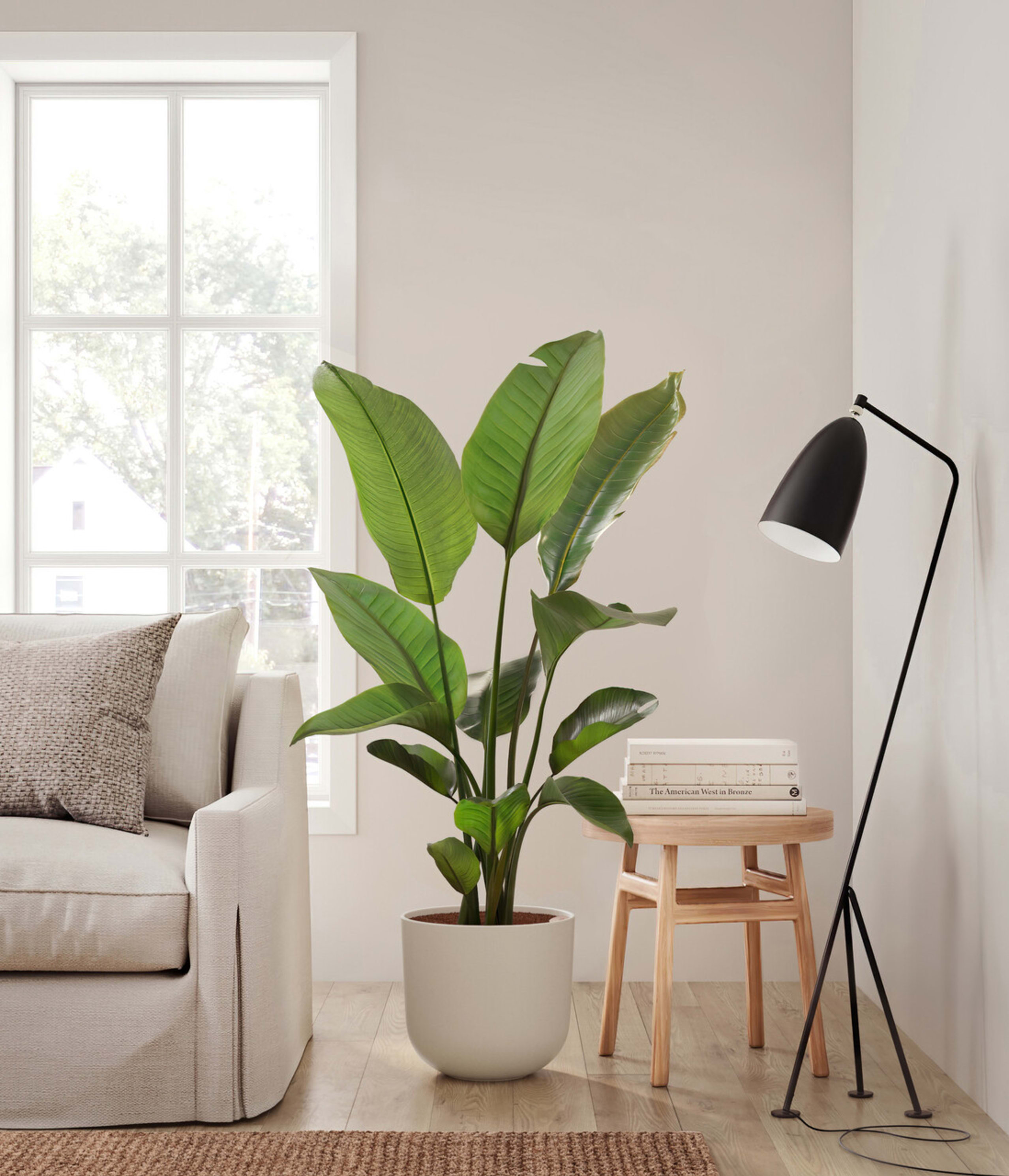Plant care library / Kalanchoe Blossfeldiana
How to Care for Kalanchoe Blossfeldiana
About Kalanchoe Blossfeldiana
A true tropical evergreen, Kalanchoe Blossfeldiana is sure to bring out the best and brightest in any space it inhabits. Also known as Flaming Katy or Christmas Kalanchoe, this plant is native to Madagascar and is loved for its ease of care, making it a great choice for both beginner and experienced gardeners. With its vibrant, brightly colored flowers that can last up to eight to twelve weeks, and its waxy, scalloped foliage, the Kalanchoe Blossfeldiana is a cherished symbol of generosity and kindness, making it the perfect gift for those you love most. With proper care, this plant will thrive and bring a touch of tropical beauty to your space.
Kalanchoe is a highly sought-after houseplant that loves dry climates. Gardening enthusiasts are drawn to this plant for its low maintenance, eye-catching leaves, and ability to produce beautiful flowers again and again with the right amount of light exposure!
Other common names
- Florist Kalanchoe
- Flaming Katy
- Christmas kalanchoe
- Madagascar Widow's-Thrill
How Often Should I Water My Kalanchoe Blossfeldiana
With easyplant, watering your Kalanchoe is simple. Make sure to check the easyplant reservoir once a month and fill it when empty, and you're all set!
If you don't have an Easyplant pot, monitor your Kalanchoes' water levels and provide them with water every ten days or two weeks. To check if it's time for watering, feel the soil about 3-4 inches deep - once dried out completely, it is time for water. If the leaves start wilting, that indicates they are far overdue for a drink of water. Because the Flaming Katy is a succulent, it's important not to overwater. Too much water can cause root rot, which is a serious problem for this type of plant. Overwatering also causes the leaves to fall off and prevents your Kalanchoe from flowering. Self-watering with easyplant is an ideal solution to this problem!
Kalanchoe Blossfeldiana Light Needs
Kalanoche Blossfeldiana grows best in a space with bright direct light, where the sunlight streams inside directly, and can also adapt to spaces with bright indirect light, where the sun rays are diffused. Avoid placing it in spaces with low light or spaces without natural sunlight.
Kalanchoe can survive in lower-light environments, provided the climate remains warm. They need several hours of unfiltered daylight daily - preferably from a south-facing window during winter and indirect light (or an east/west window) for summertime. If your Kalanchoe is looking weak with long thin stems, chances are it's not receiving ample sunlight!
Kalanchoe Blossfeldiana Plant Care
Kalanchoe care is relatively easy and straightforward. These plants need a fair bit of direct sunlight during the day, but they do not like to be in full sun all the time. Rotate your pot by 1/4 turn monthly to ensure all sides get equal exposure and monitor the soil for dryness. During the first few days after bringing your Kalanchoe blossfeldiana home, it is normal for it to lose several leaves or for the leaves to turn brown. This is simply part of the plant's adjustment process and there is no need to be concerned. If you see a leaf or two that needs to be trimmed, simply shake it off or cut it off and look forward to new, better-adjusted leaves growing in. Pruning is also essential for maintaining healthy growth and size. Prune off dead or damaged leaves as soon as they appear. Additionally, Kalanchoe, like other flowering plants, benefits from 'deadheading'. When its blooms begin to fade and die off, it's advisable to remove them. This practice allows the plant to focus its energy on creating new blooms and maintaining overall health. Remember, regularly removing spent flowers is a normal part of care for plants that bloom. Lastly, be sure to keep the plant in an area with ample airflow. This will help your Kalanchoe remain strong and healthy for years to come!
How Big Do Kalanchoe Blossfeldiana Plants Grow?
Thriving in bright light and dry climates, Kalanchoe blossfeldiana is a slow-growing plant that can reach 8 to 12 inches in height when grown indoors. Kalanchoes prefer to be kept on the dry side and, for optimal growth, should not be over-watered.
Its wide, oval leaves are often vibrant and beautiful even when not blooming, adding character and life to any space. It usually takes between two and five years for Kalanchoe to attain its full size.
Temperature & Humidity
Florists' Kalanchoe flourishes best in temperatures of 60 degrees Fahrenheit at night and 70 during the day, while anything above 75 may impede its flowering process. Fortunately, as a succulent plant species, this variety is resilient to moisture stress.
To ensure successful growth and development, relative humidity should remain consistently between 75-85 percent. High humidity levels of above 90 percent can lead to a decrease in leaves and the yellowing of leaf spots, along with damage to flower heads and buds.
Are Kalanchoe Blossfeldiana Toxic for Pets & Kids?
Although Kalanchoe plants are not typically lethal to humans, they can be incredibly dangerous when consumed by pets. Humans may experience nausea and vomiting as a result of ingesting this plant. Every aspect of the plant is poisonous - from its foliage and flowers down to the water it sits in.
Kalanchoe ingestion can be toxic and even fatal for any pet, as it disrupts their body's ability to regulate electrolytes which can induce abnormal heart rate, seizures, and even death. Furthermore, this poisonous plant also impacts the gastrointestinal system and nervous systems of pets.
Therefore, it's important for those with cats or dogs at home to keep an eye out for any potential risks posed by these common houseplants.
Troubleshooting Common Problems with Kalanchoe Blossfeldiana
If you find that your Kalanchoe isn't doing well, there are a few common problems to look out for. These issues usually manifest in discoloration or yellowing of leaves, stunted growth, and wilting.
The most common cause of these problems is incorrect watering. Kalanchoes need a moderate amount of water, not too much and not too little. Too little will reflect in brown leaves, while too much might cause root rot. To check if your plant has root rot, gently remove it from the pot and look for signs of decay. Repot with fresh soil if necessary.
If you are using an easyplant pot, be sure to refill the reservoir every month, and you should have no problem. If you are watering manually, check the soil 3-4 inches deep - if it is dry, then it's time for water.
Kalanchoe plants are often plagued by mealybugs, aphids, and brown scales.
Keep an eye out for white cottony masses on leaves and stems (mealybugs), small green or black insects clustered on new growth (aphids), and brown circular bumps on stems and leaves (brown scales). To treat them, you can use a mixture of water and dish soap, neem oil, or insecticidal soap sprays.
Regularly inspecting your plants and acting quickly can help keep these pests under control. To prevent the further spread of pests, isolating infested plants from other healthy ones is advisable. Frequently Asked Questions About Kalanchoe
Frequently Asked Questions about Kalanchoe Blossfeldiana Plant
- Is a Kalanchoe plant indoor or outdoor?With its extreme sensitivity to cold temperatures, indoor life is the best environment for Kalanchoe plants in most climates. In ideal indoor conditions, Kalanchoe will flower several times a year and stay in bloom for months.
- Do Kalanchoe come back every year?Kalanchoes are a popular perennial flower that can return each season in the correct climate. These plants thrive best in regions 8-10, but they cannot withstand temperatures lower than 40°F for extended periods of time. However, even if grown as houseplants, these flowers bloom every year!
- How do you care for a Kalanchoe blossfeldiana?Kalanchoe blossfeldiana is a very low-maintenance houseplant. To keep this plant in optimal shape, water it deeply every 10-14 days and let its soil dry out completely between waterings. It's important to maintain consistent humidity and temperature levels and provide plenty of light.
- Can Kalanchoe take full sun?When grown indoors in climates characterized by colder temperatures, Kalanchoe thrives best when exposed to full sun or bright indirect light.

 Small Plants
Small Plants Medium Plants
Medium Plants Plants Collections
Plants Collections Large Plants
Large Plants Huge Plants
Huge Plants